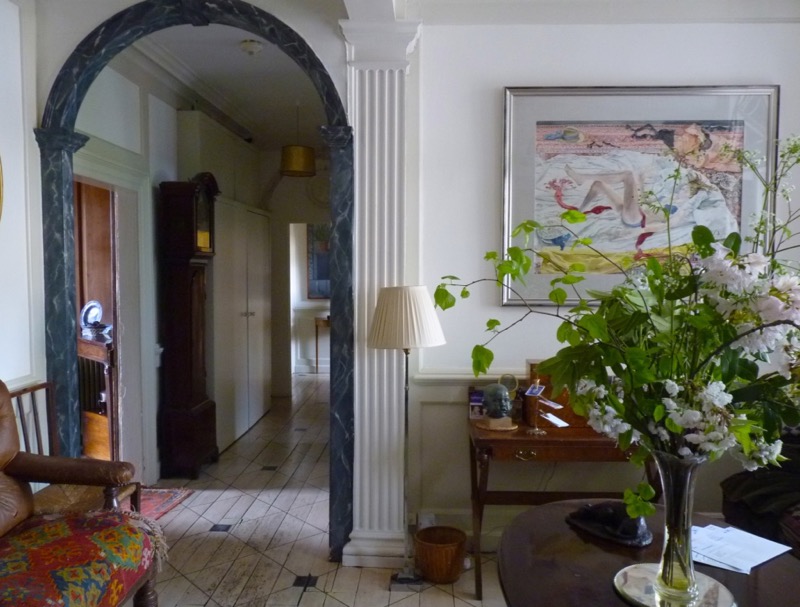
It is an odd thing to find yourself living back in your childhood house at the age of 40 with your parents and your own young family and husband. Sometimes as I walk through the house and garden I slip from mother to daughter and from adult to child.
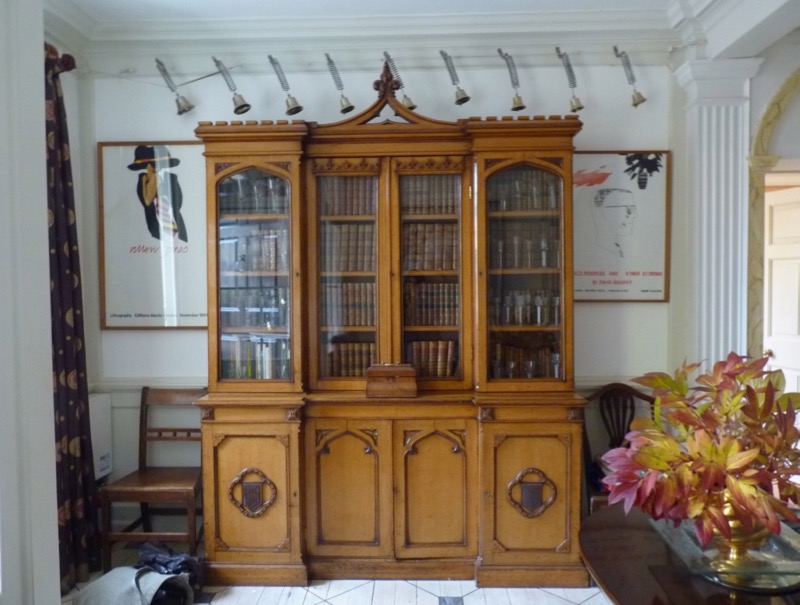
At first I found this disconcerting, this shape shifting, but now I recognise the richness of such a multilayered emotional experience.
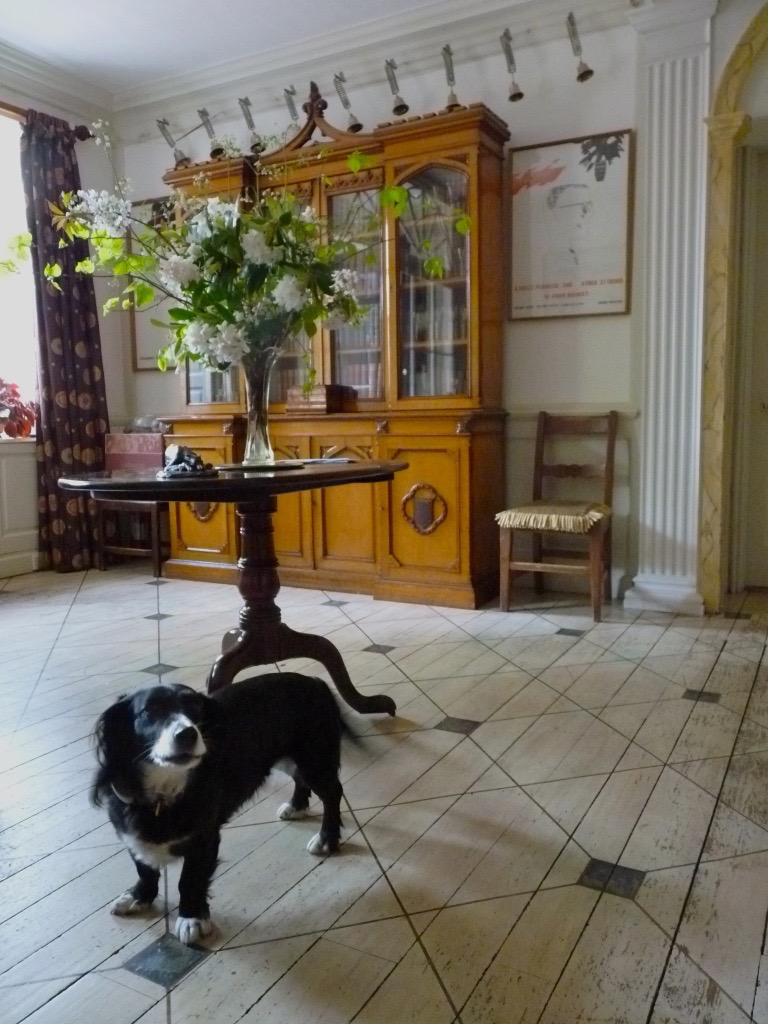
[ Bobs, the mongrel stray adopted and brought back after a holiday in Greece ]
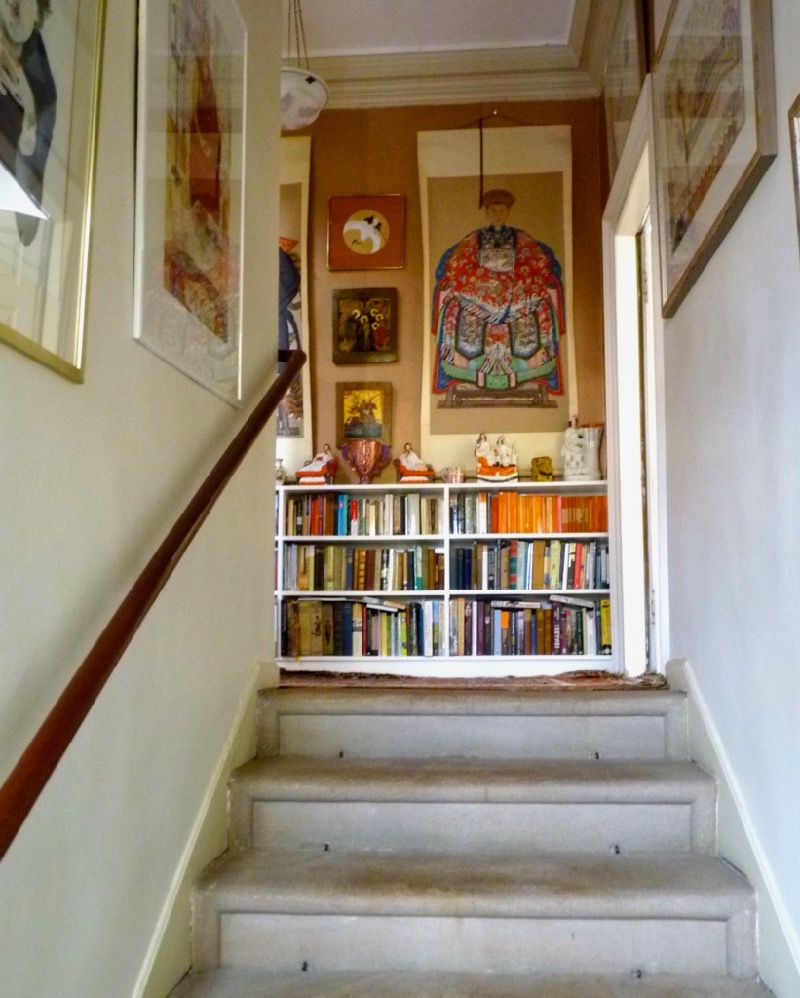
It can be triggered by an object, a certain angle of light, or even as I round a corner a memory can surface from something as slight as the sound and feel of my feet on the stone stairs.
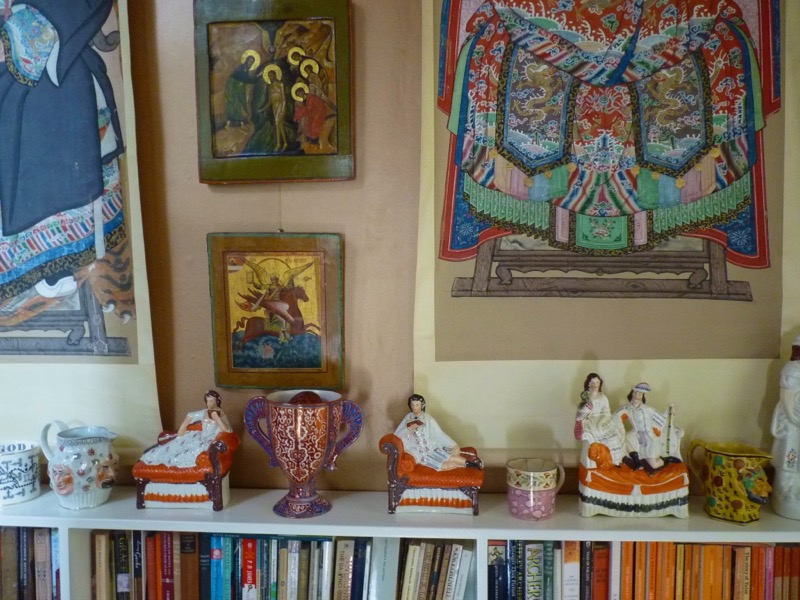
As the years pass I often wonder if the memories and emotions of others who have lived here before me are beginning to rise to the surface and I wonder if those who come after me will feel the gossamer threads of my own thoughts and feelings.
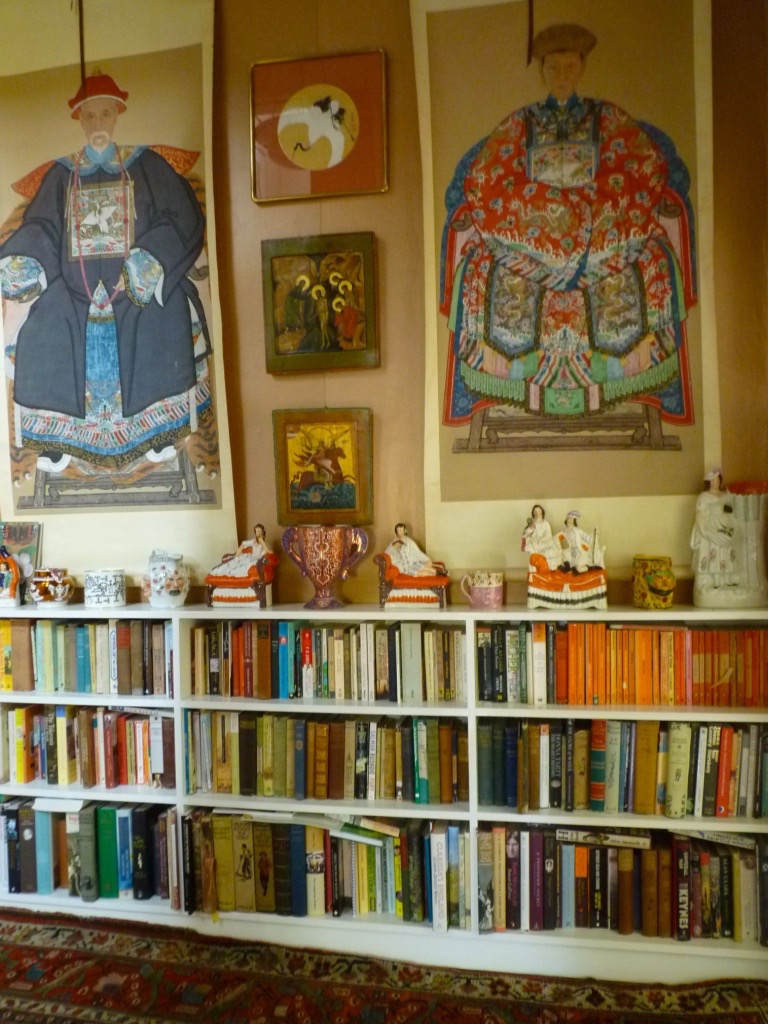
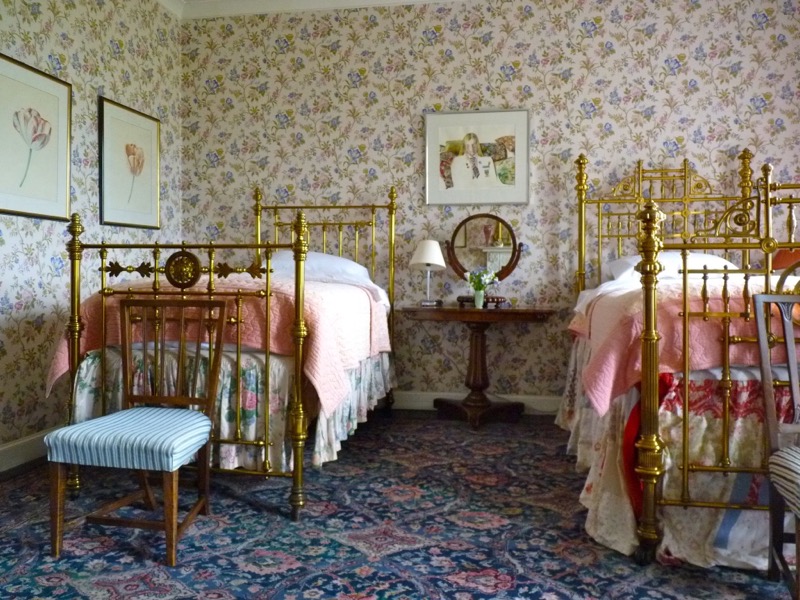
The power of seeing your children at the same age and stage as you were, climbing the same trees, running down the same paths and sleeping in the same beds is like diving back into one’s childhood and bringing up treasures which have been buried for years.
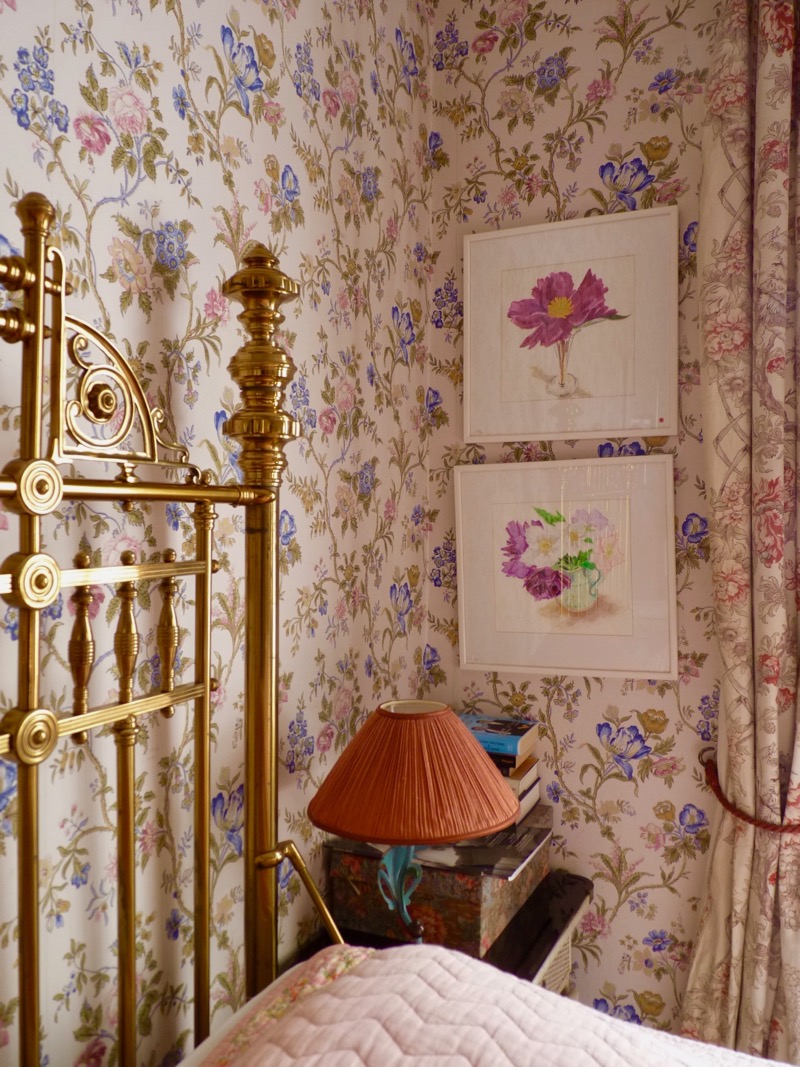
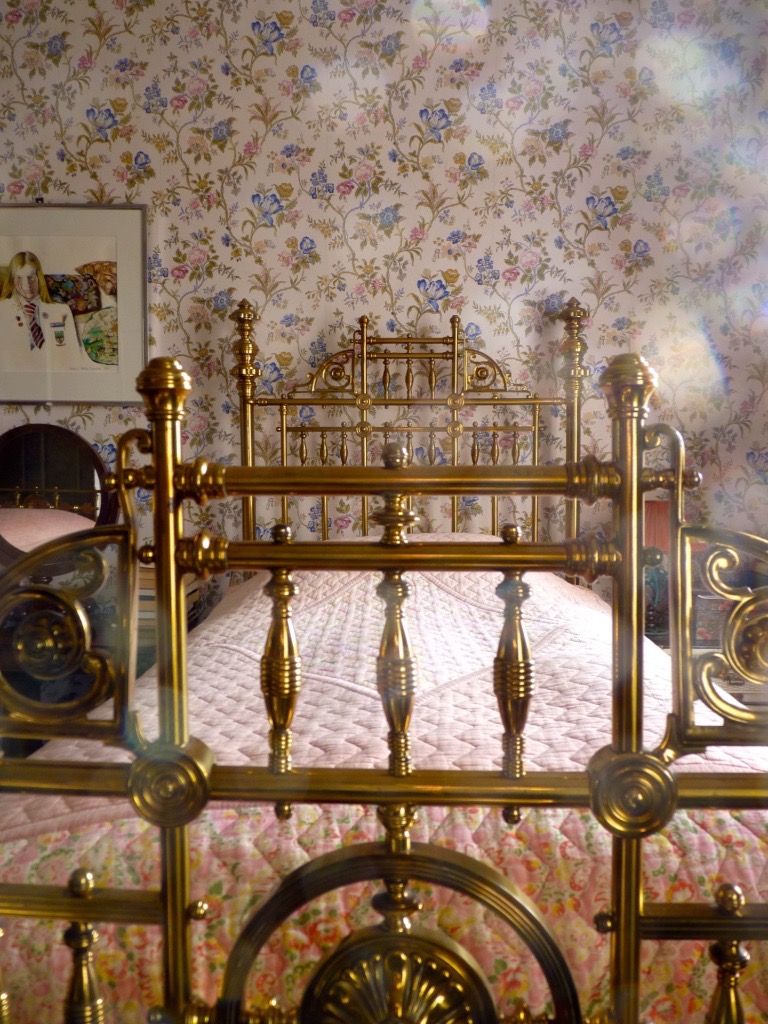
I understand my parents more deeply and it underlines the flow of life and my place in it. It informs all my work.
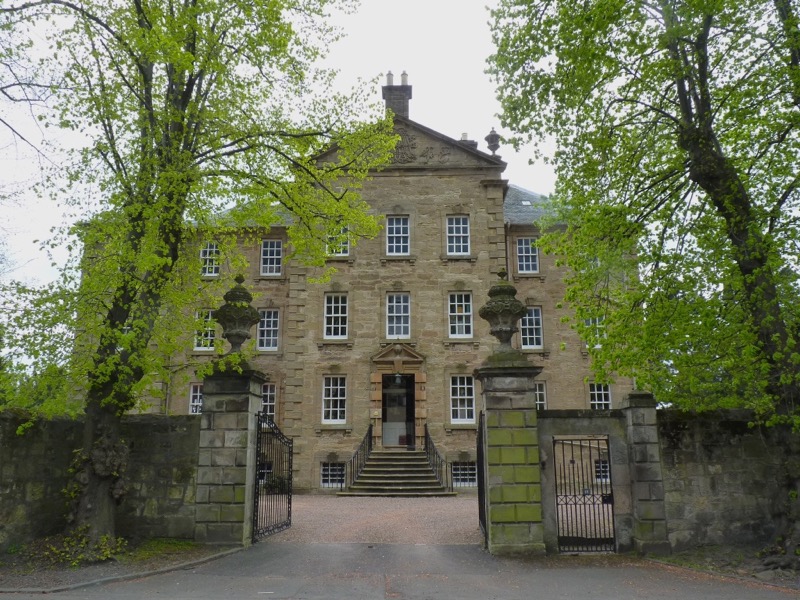
The Manor House has been the constant centre for three generations
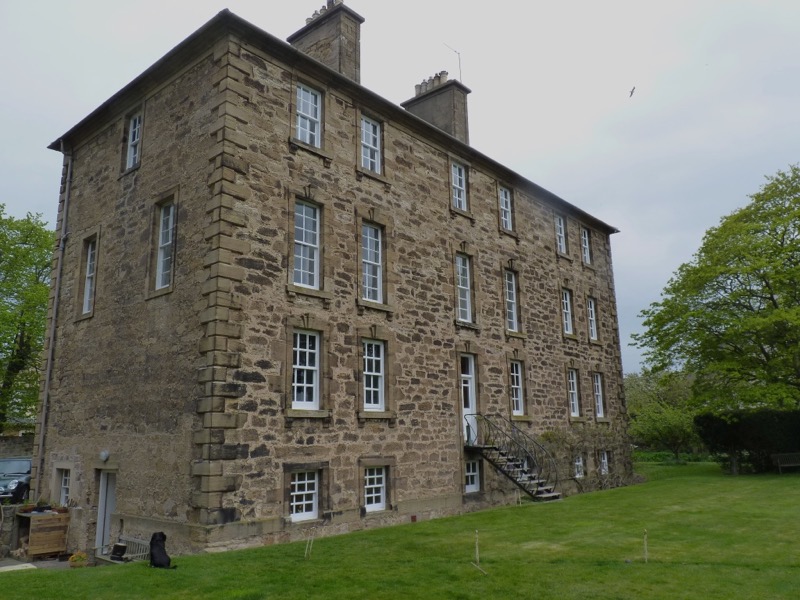
and I – in the middle – have a foot in each one.
When we first moved here , I was three and my brother was five. My sister was still to arrive and was born some years later in the house . We had left London in the 60’s and returned to Scotland where my father had been born and raised and where he had got a job at the Edinburgh College of Art .
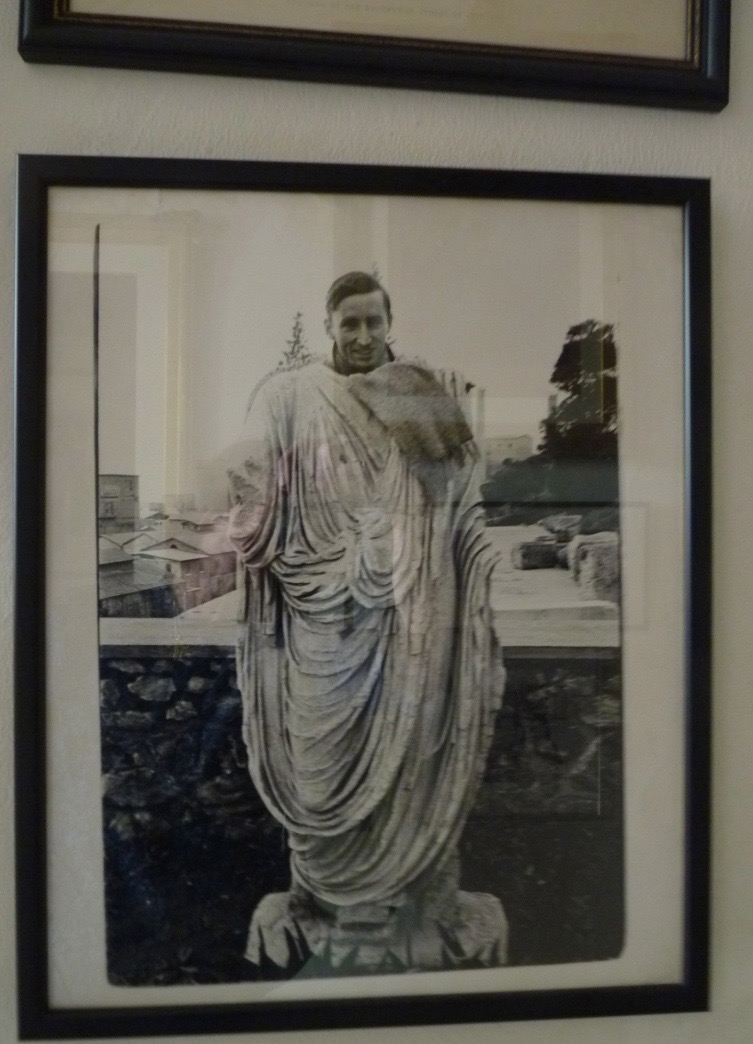
[Harry More Gordon, lively, outspoken, ‘the best dancer ever, and unlike most fathers, never embarrassing’, one time picture and layout editor at Vogue]
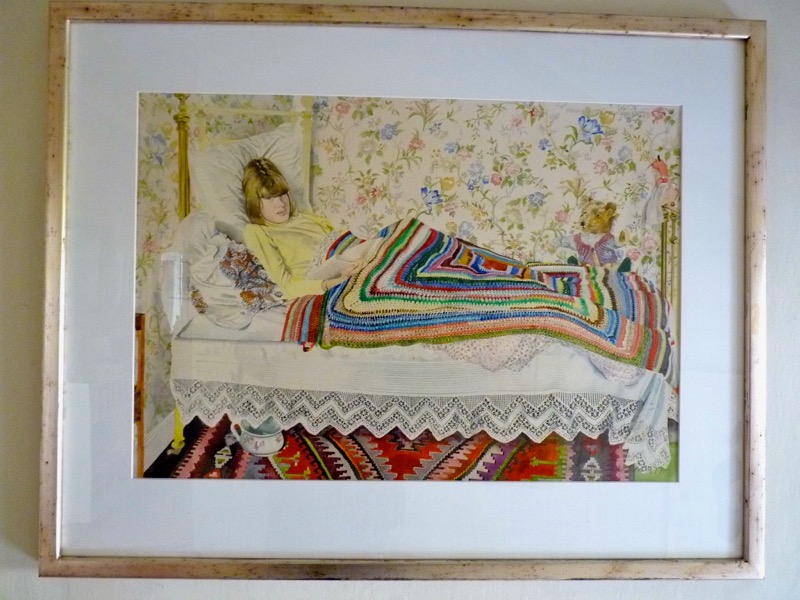
[Harry’s painting of Domenica’s younger sister Zillah, ill in bed.]
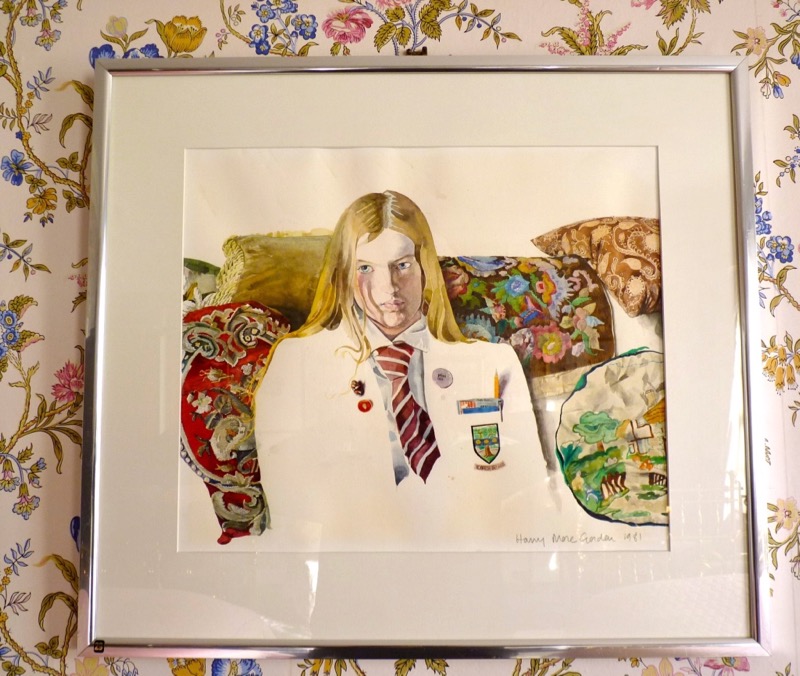
[Zillah by Harry More Gordon, post-school, with home made badge, ‘Piss Off.’]
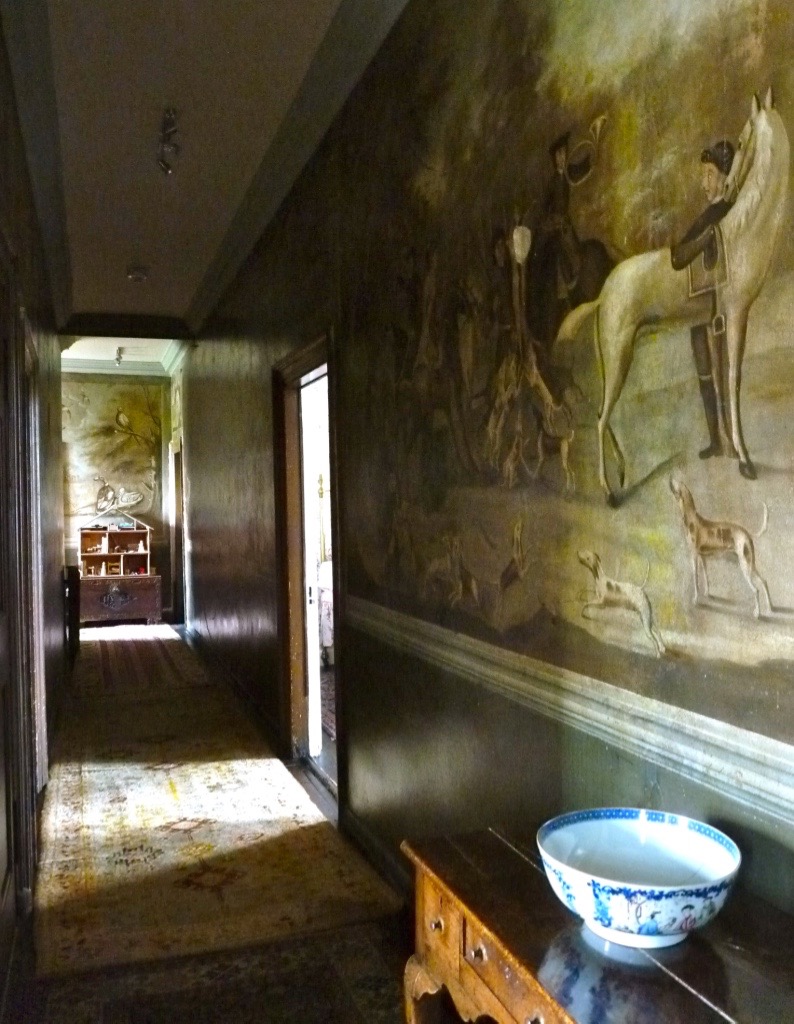
It took a long time to wake the house up again.
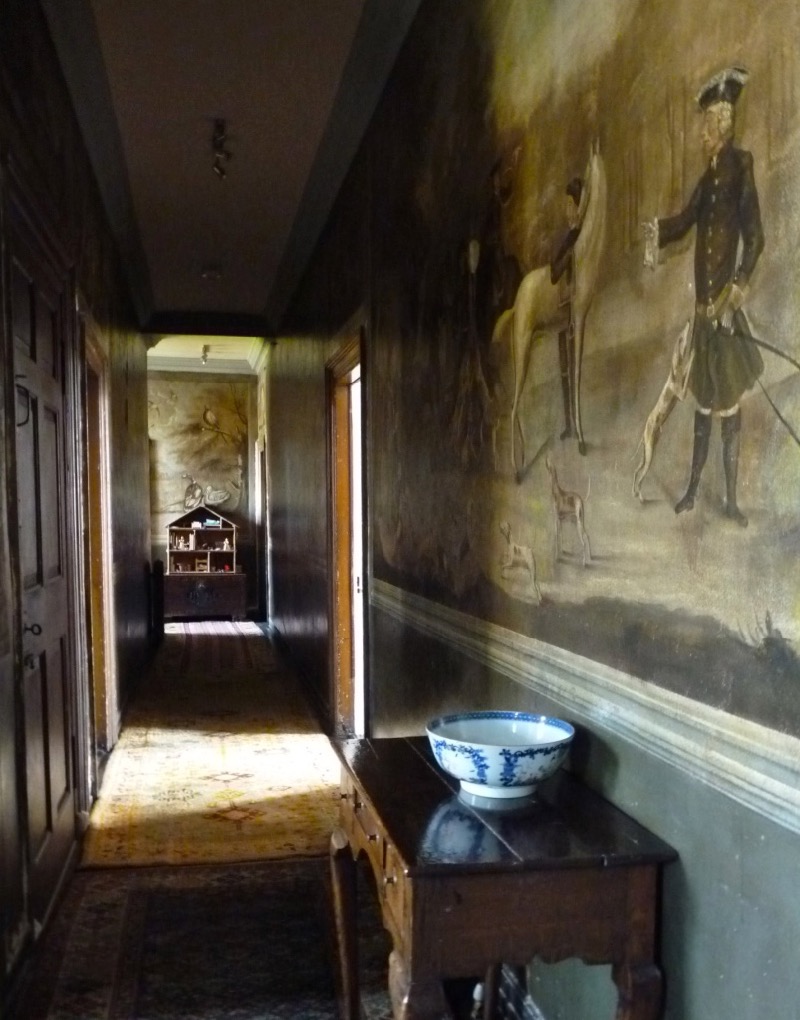
Even as a small child I could feel the dead places, the dark places and the ones where life was beginning to return. I was never afraid, even though others swore they saw ghosts.
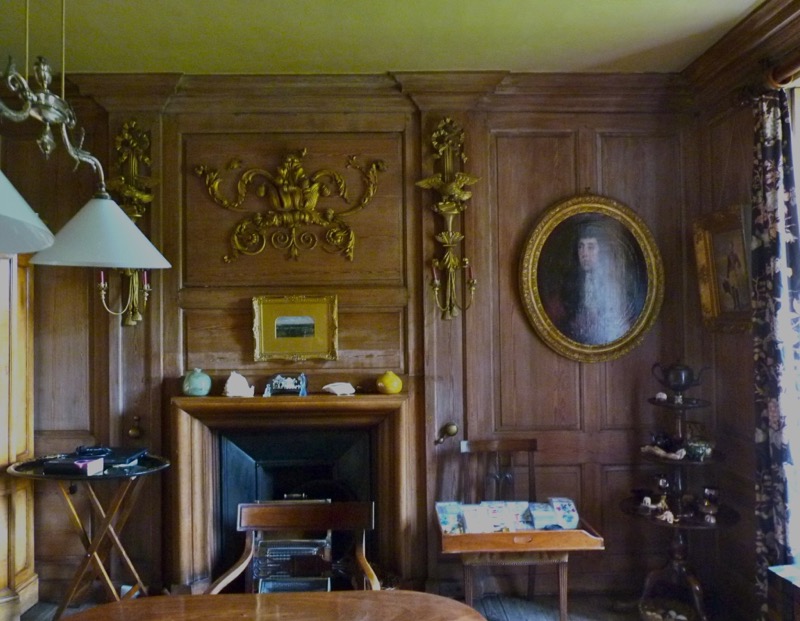
Now it is fully awake and has a gentle soft breath all of its own.
The first thing my parents did was to knock down all the partitions and return the rooms to their original proportions, install central heating and plumbing, and replace the roof, which left a tiny budget for decorating and furniture.
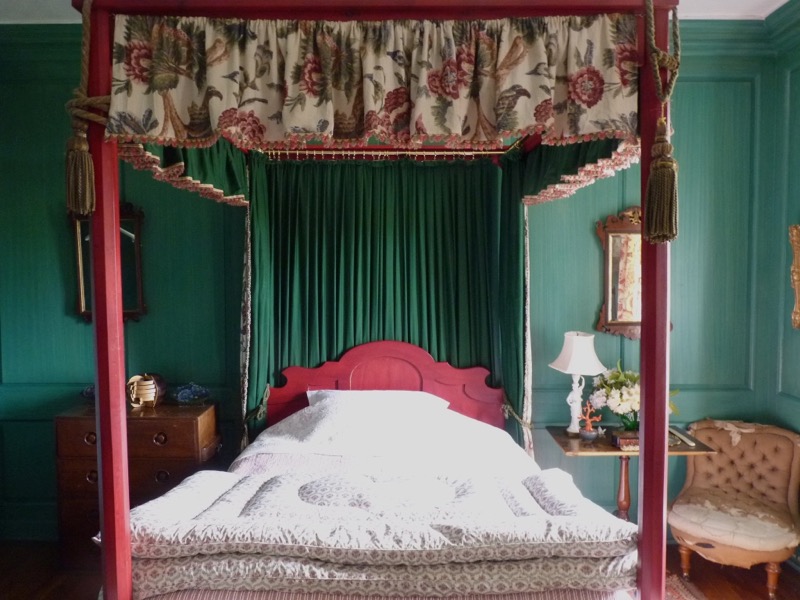
[The crimson four-poster hung by Marianne More Gordon with a document linen bought at a local junk yard that she painstakingly washed and restored.
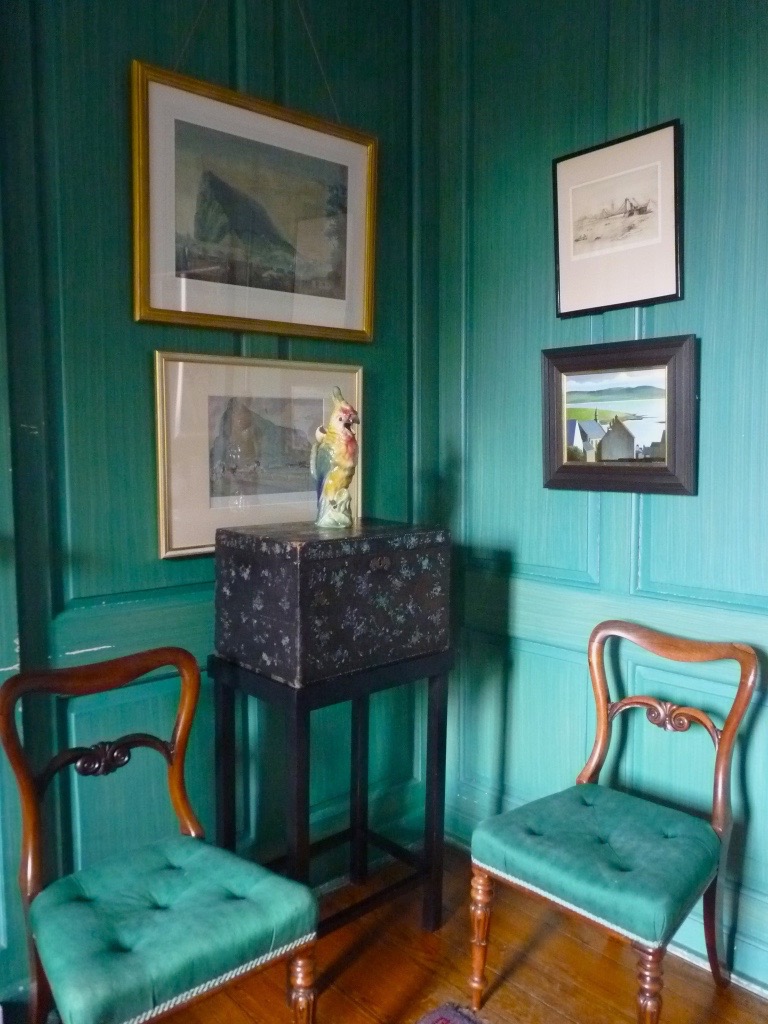
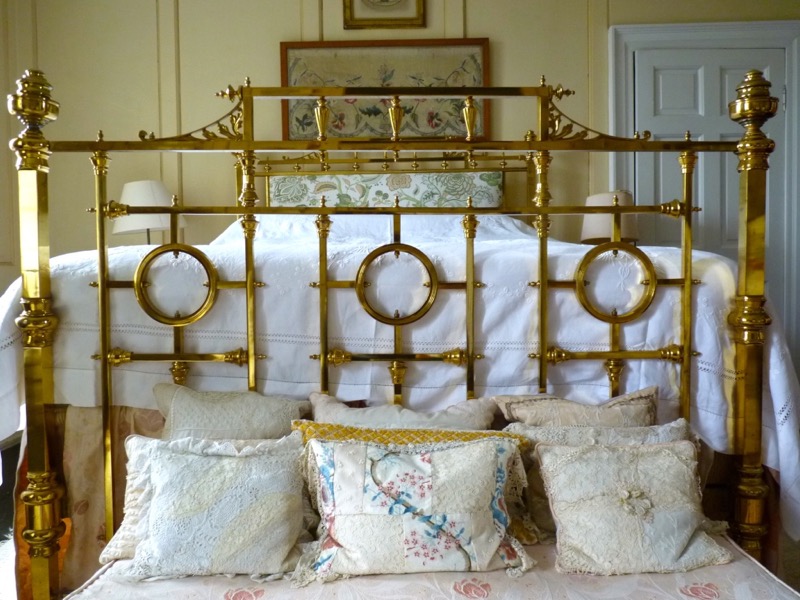
In those days no one wanted old furniture or plates or linen and so it was possible to get wonderful things for very little from auctions, junk yards and charity shops – the kitchen table cost the equivalent of 50p – the brass beds and their rock-hard horse-hair mattresses were from an auction, and the local junk yard has been a treasure trove to us all over the years, and still is. Once on a trip there my mother noticed bits of beautiful yellow shot satin being trodden into the mud. She collected as many bits as she could find and on piecing them together discovered that it was a Worth evening dress. It must have been unpicked to find out how it was made. It is incredibly beautiful a work of art in itself and is just one of the many treasures we have found there. We delight in cracked , chipped and broken objects and it has become an obligation to rescue them.
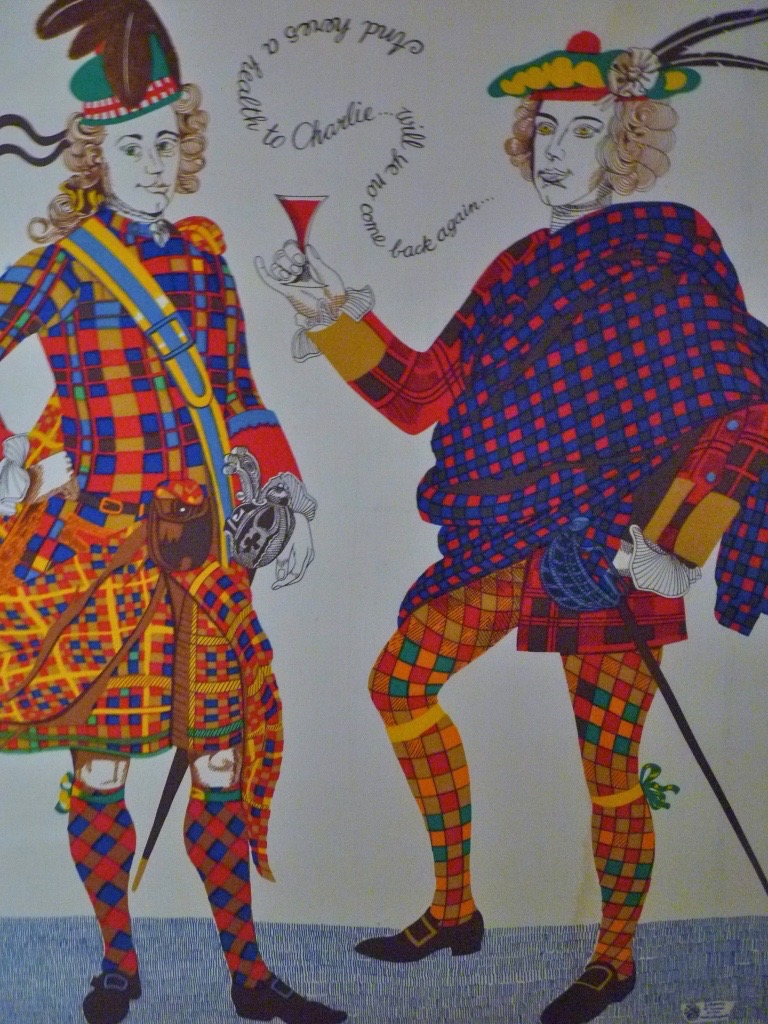
My father revelled in colour and pattern . He had a keen eye for paintings and fabrics.
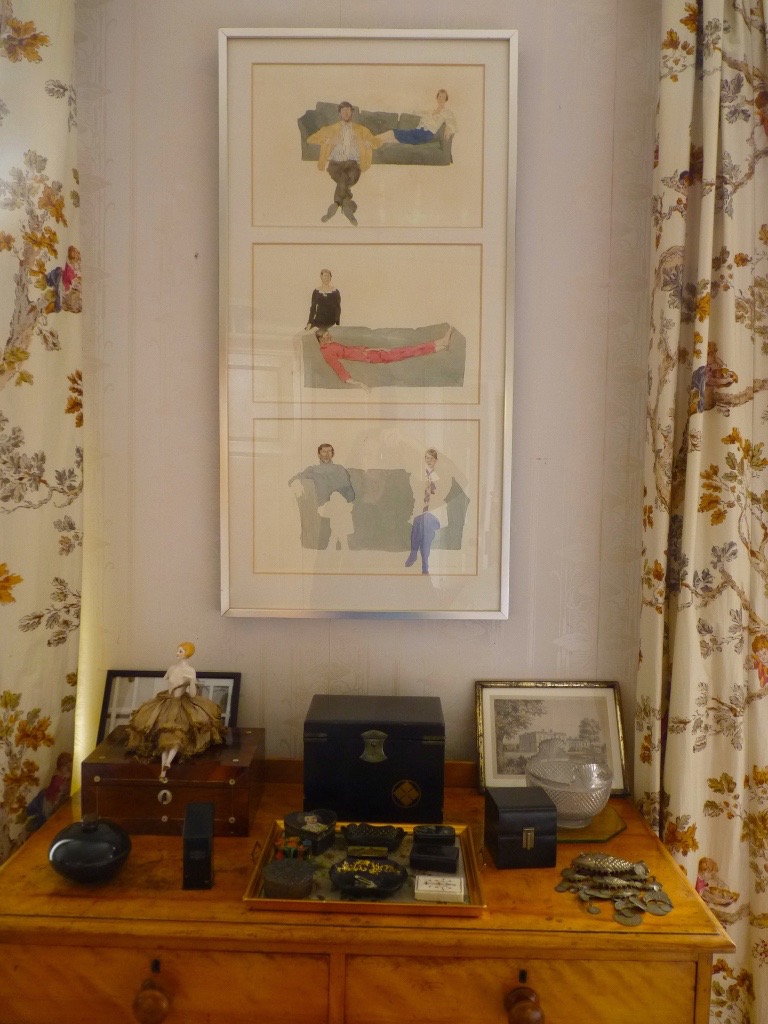
It was he who commissioned Patrick Procter to paint him and my mother, and it was this experience which launched him on his own career of portrait painting.
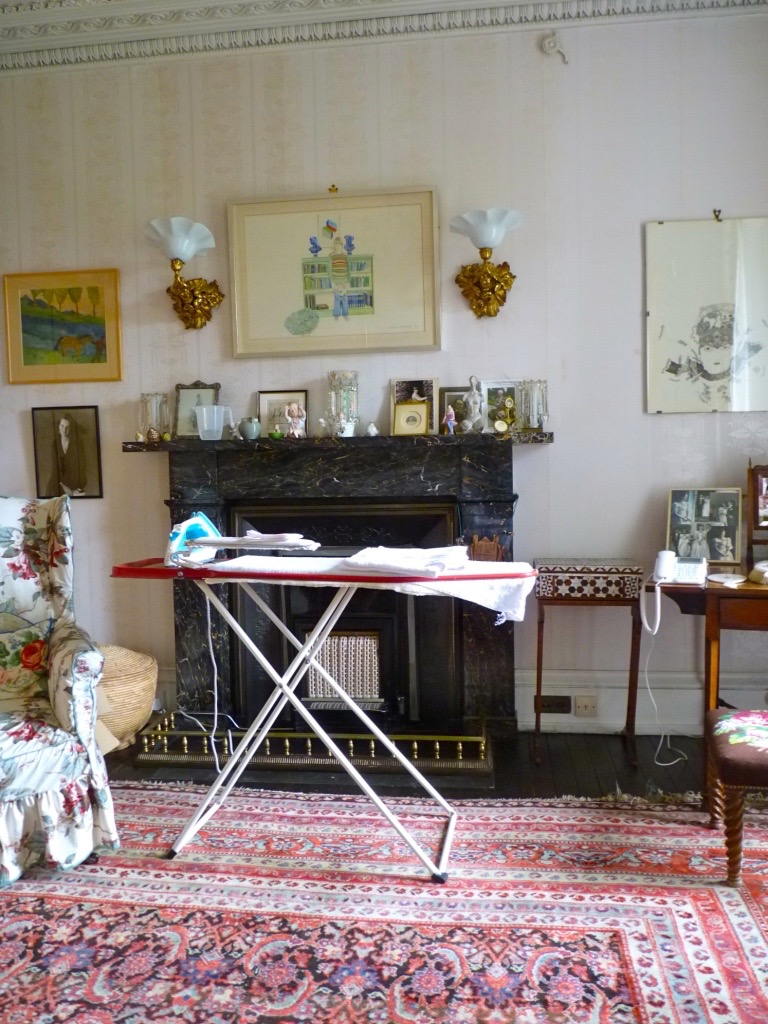
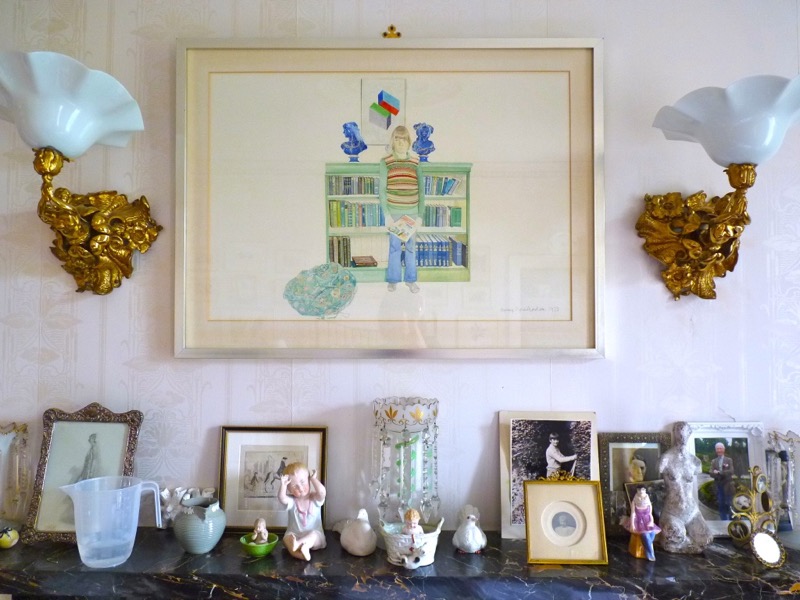
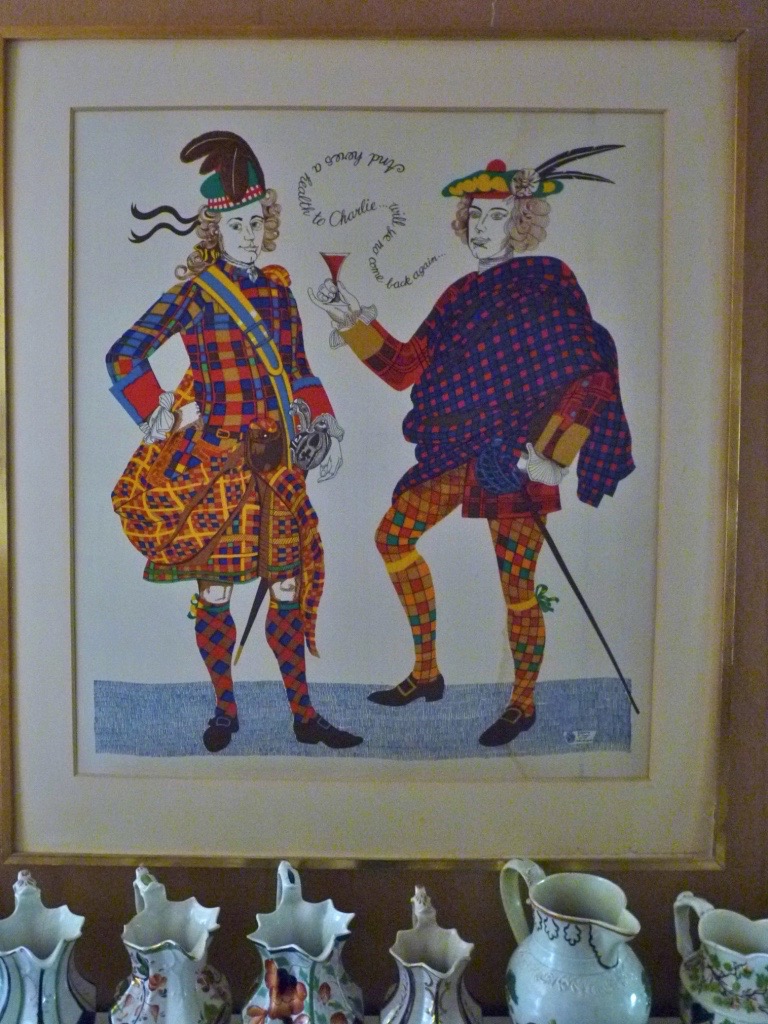
He painted beautiful still-lives too and most of the jugs and glasses and vases which line the shelves were collected and painted by him. [His textile design for a silk scarf for Libertys, hung in an upper corridor above jugs that were often props in his paintings.]
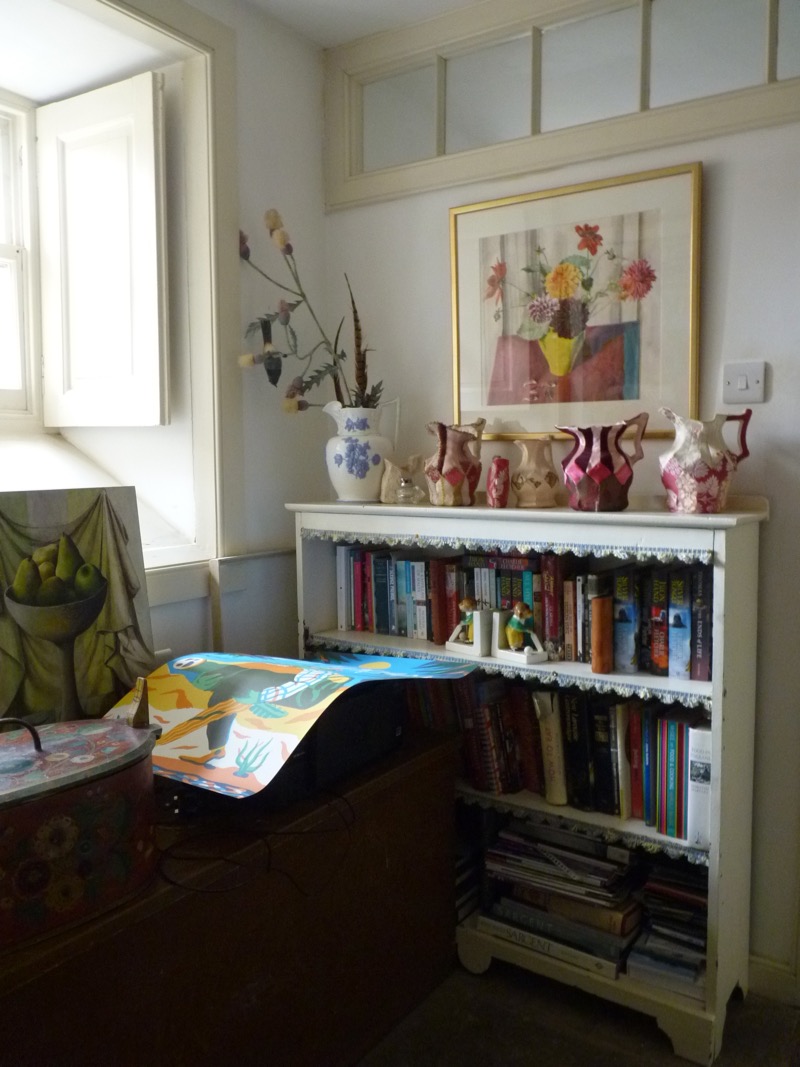
My mother is a sculptor and a textile artist. She made 3D fabric versions of the same jugs.
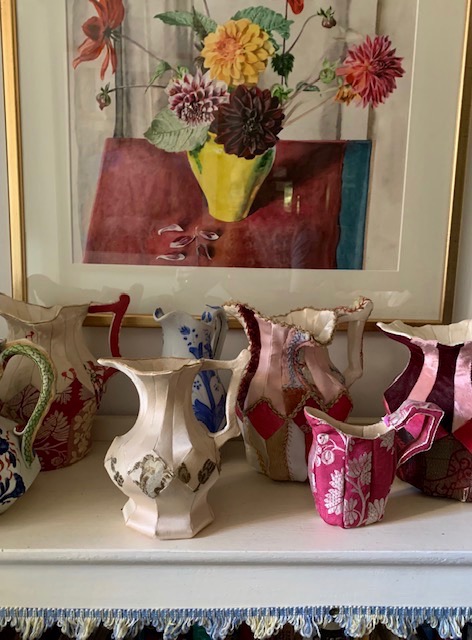
[Marianne More Gordon’s 3D fabric jugs]
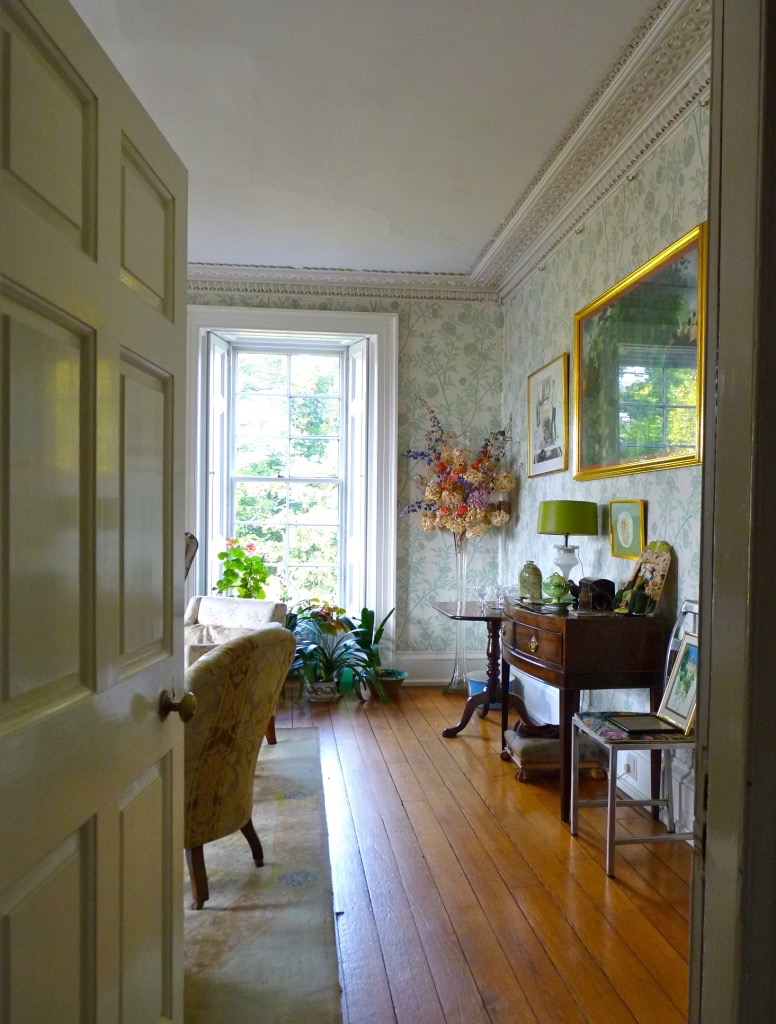
She was more interested in the feel of a room , the way the light moved around it and the fine balance between colour and shape .
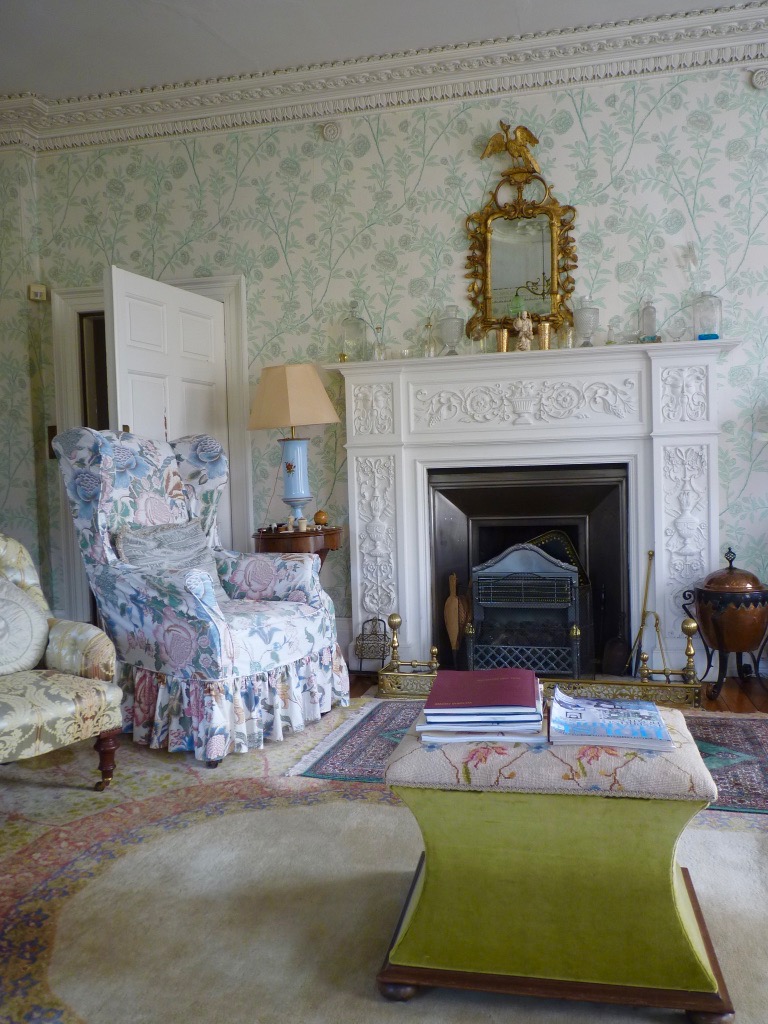
She bought most of the furniture and chose the more delicate wallpapers from ends of rolls and sales.
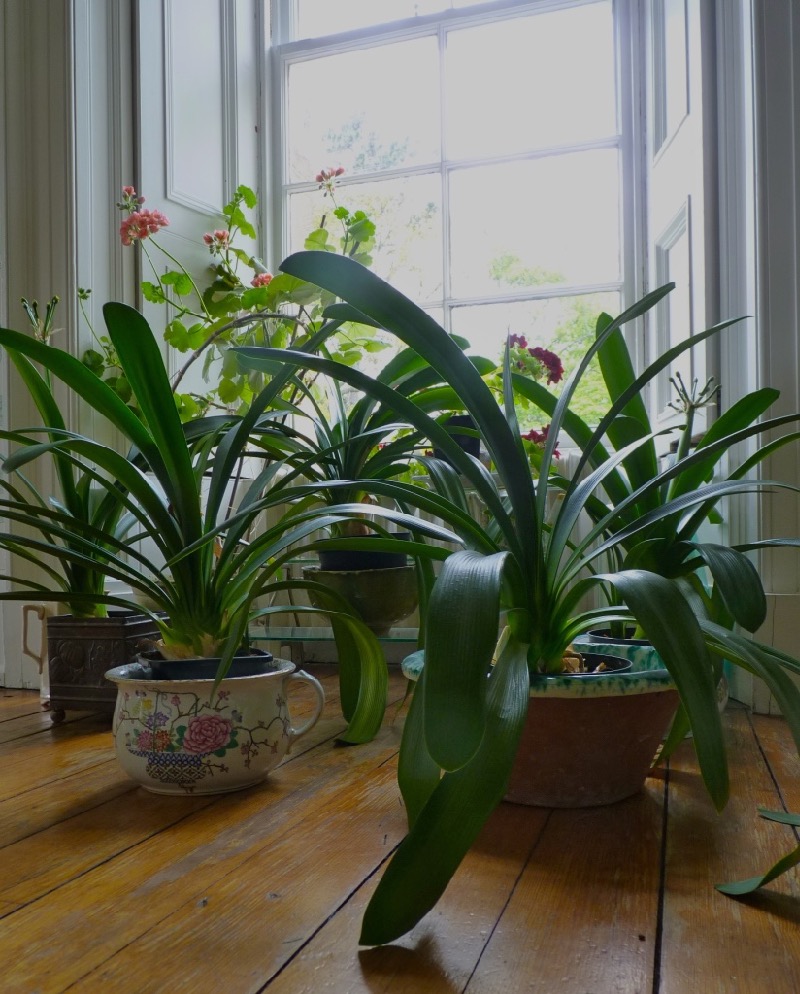
House plants
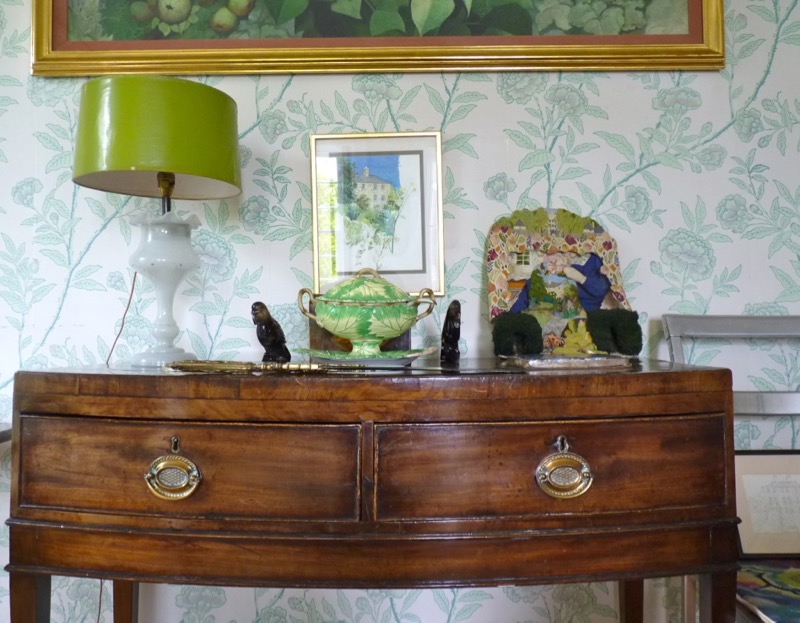
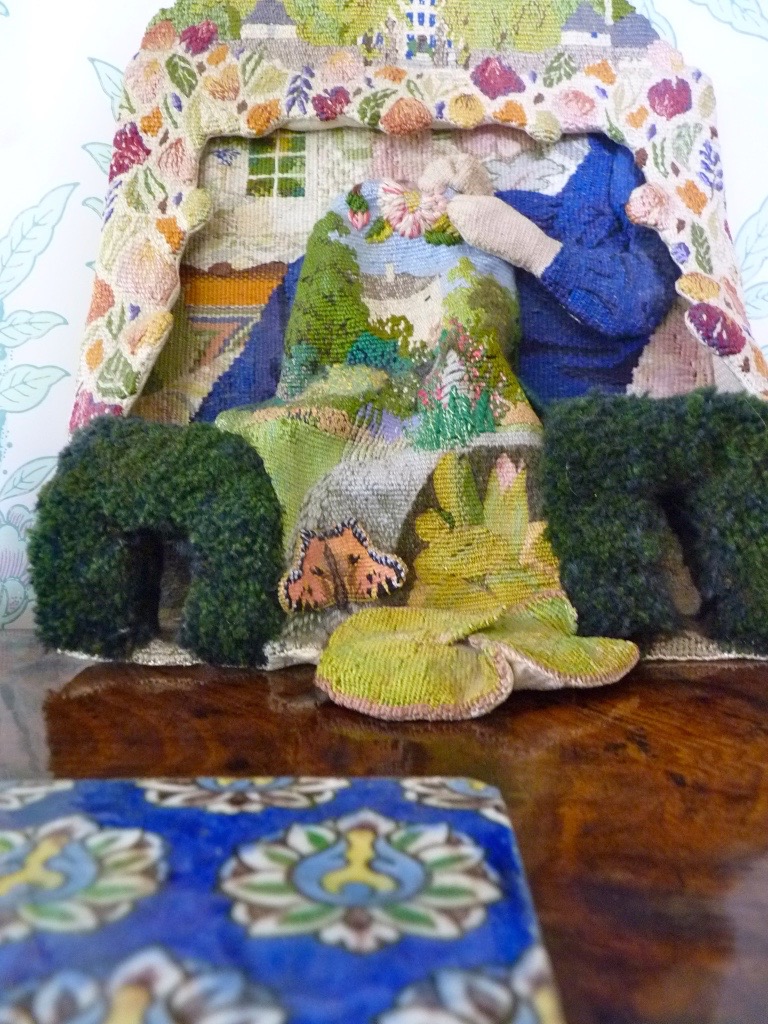
[3D textile by Marianne More Gordon [nee Thompson-McCauseland], who trained at the Central School of Art.]
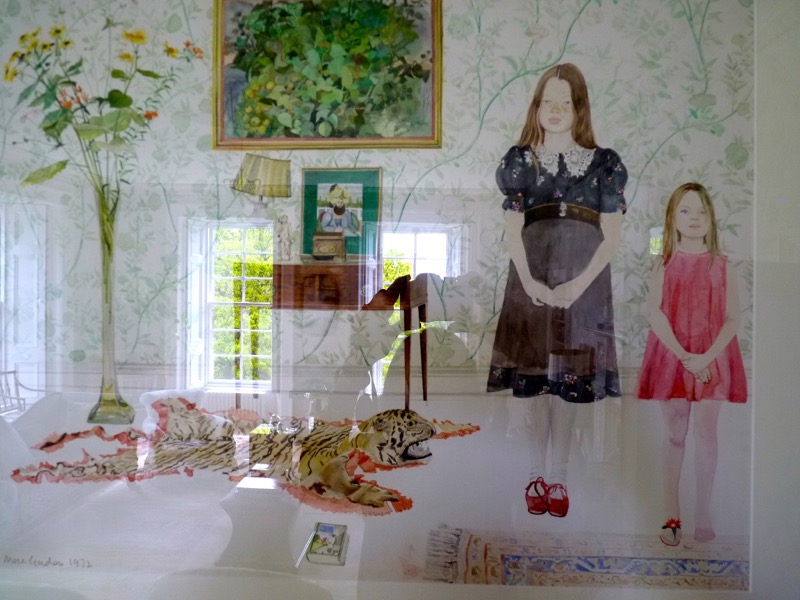
Domenica, Zillah and drawing room tiger-skin rug by Harry More Gordon]
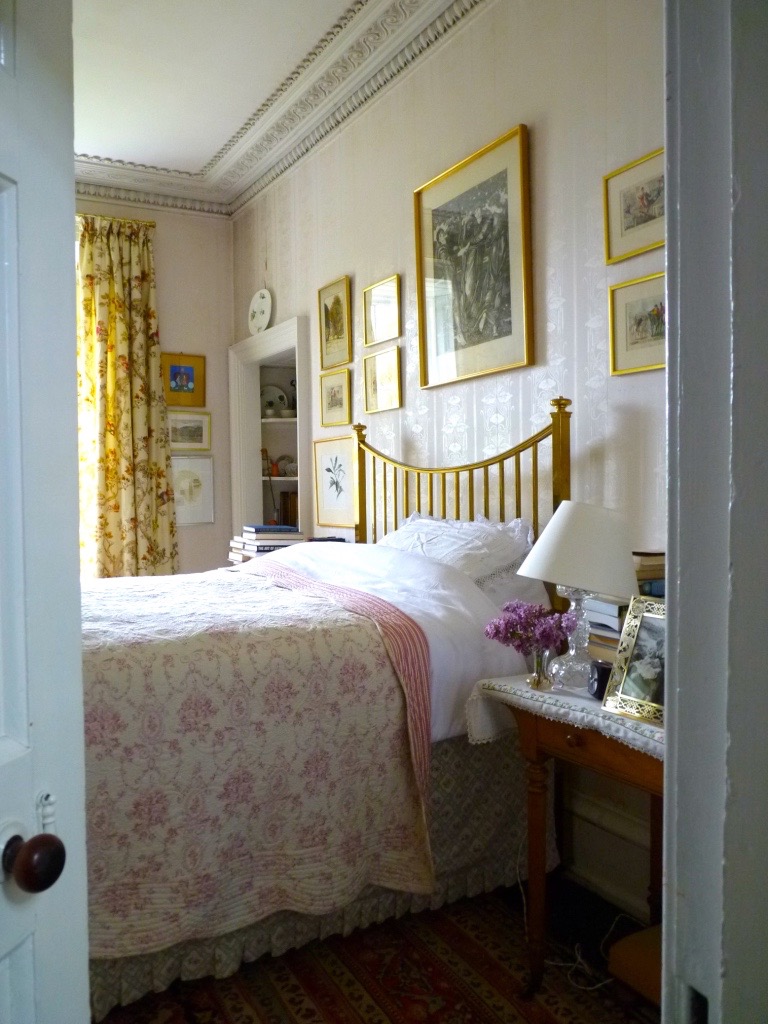
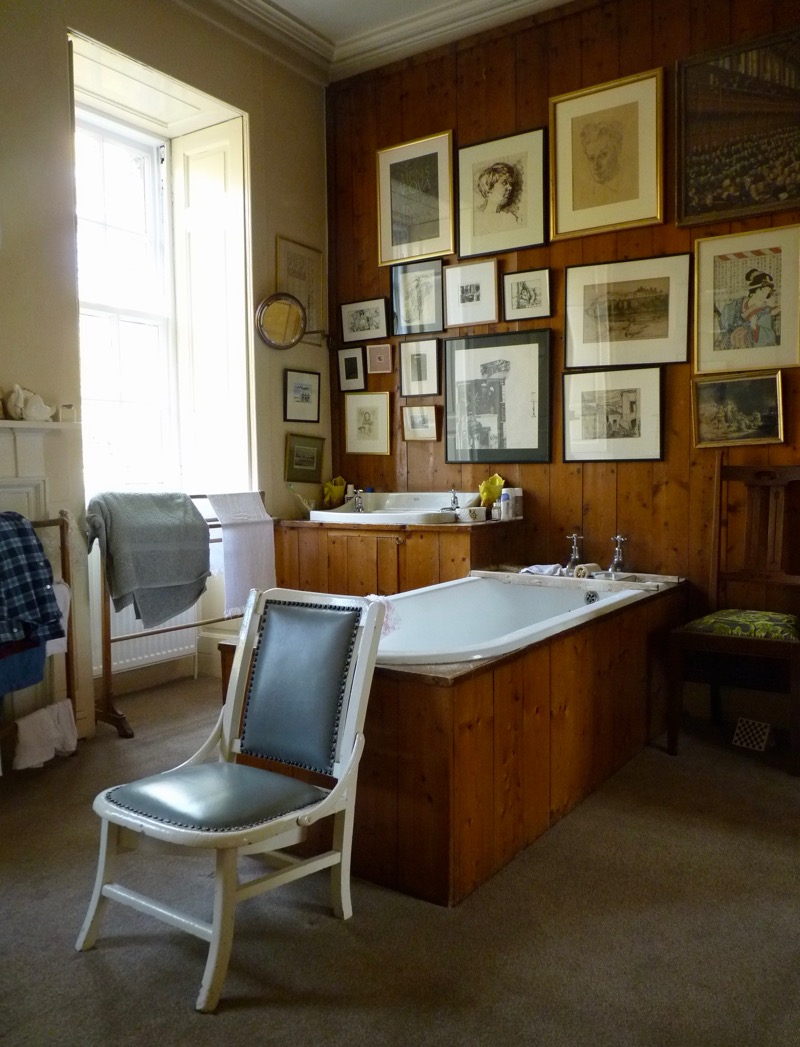
My father chose the ruched blue wallpaper in the spare bedroom, a thing of great awe to me as a child. Though he was a strong influence I would say it is my mother who made the house what it is. [Marianne’s bathroom]
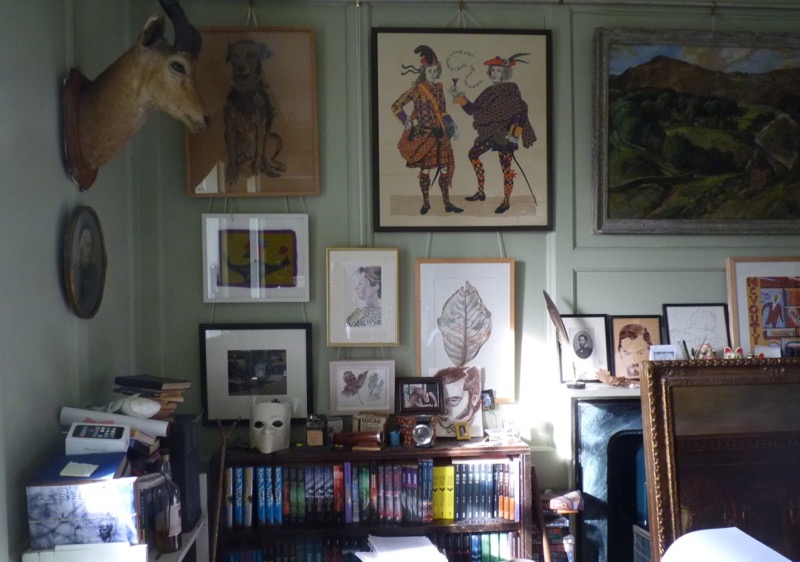
This house is our home and our inspiration. My father’s studio has become my son’s. My husband writes from a room on the top floor. [Charlie Fletcher’s writing room, with another of Harry More Gordon’s designs for Libertys, and a landscape oil painted by an illustrator for the ‘Ladybird’ book series, bought for £5 in the fabled local junk yard. Here he wrote the supernatural Stoneheart trilogy for children and The Oversight, his darkly atmospheric adult novels set in Victorian London.]
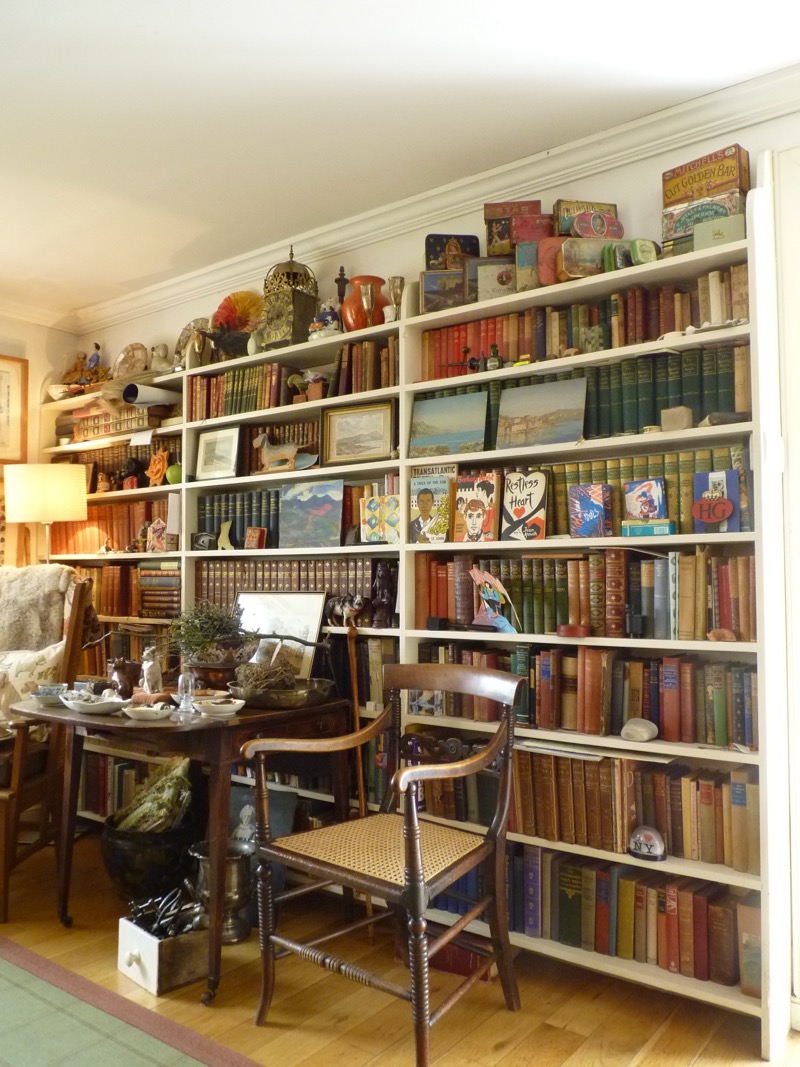
My daughter is back here
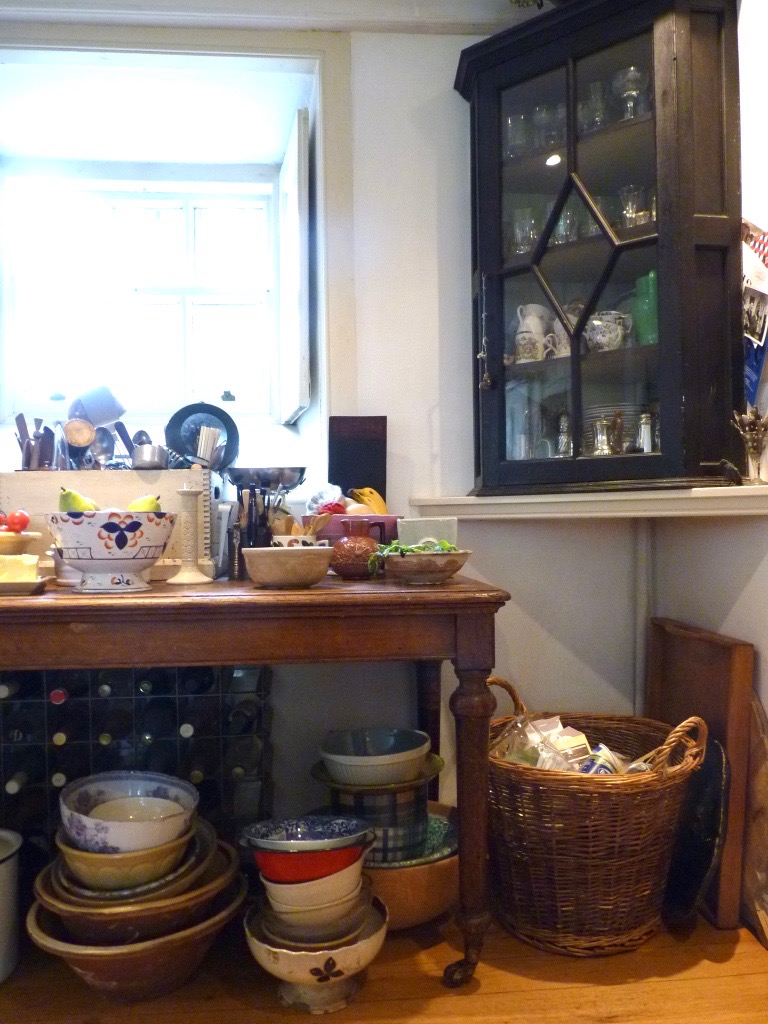
and working from the kitchen table during lockdown,
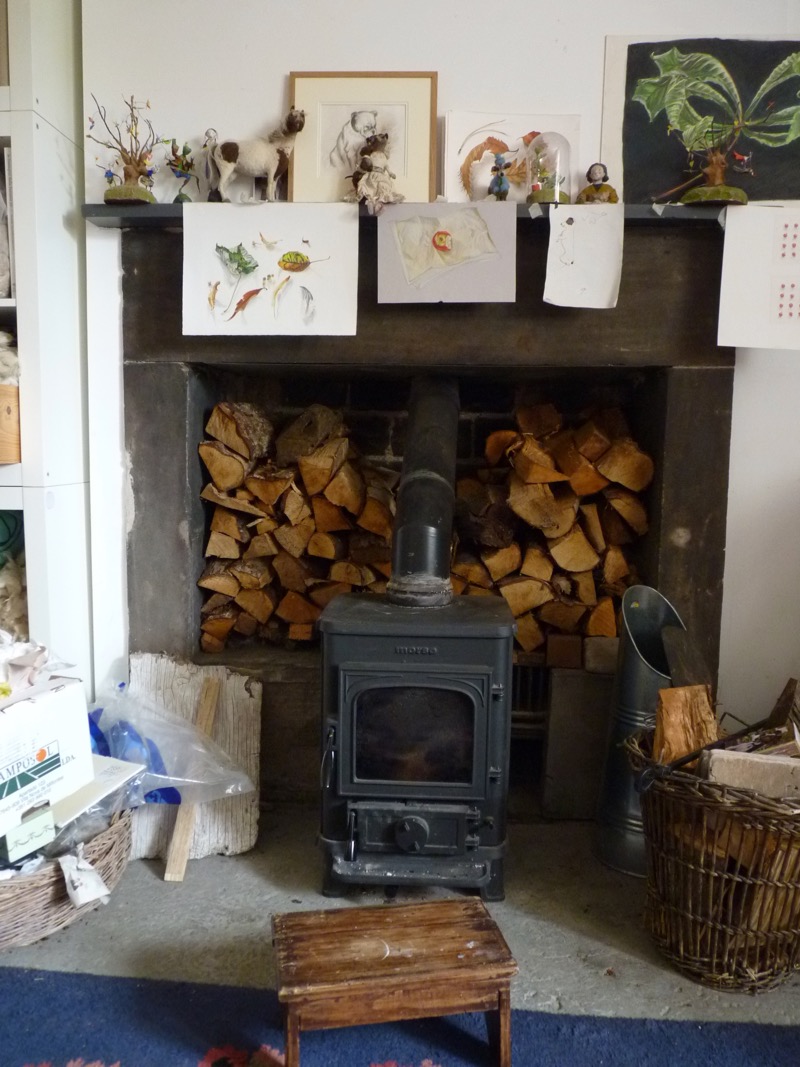
and my mother and I each have a floor of the old laundry building as our studios.
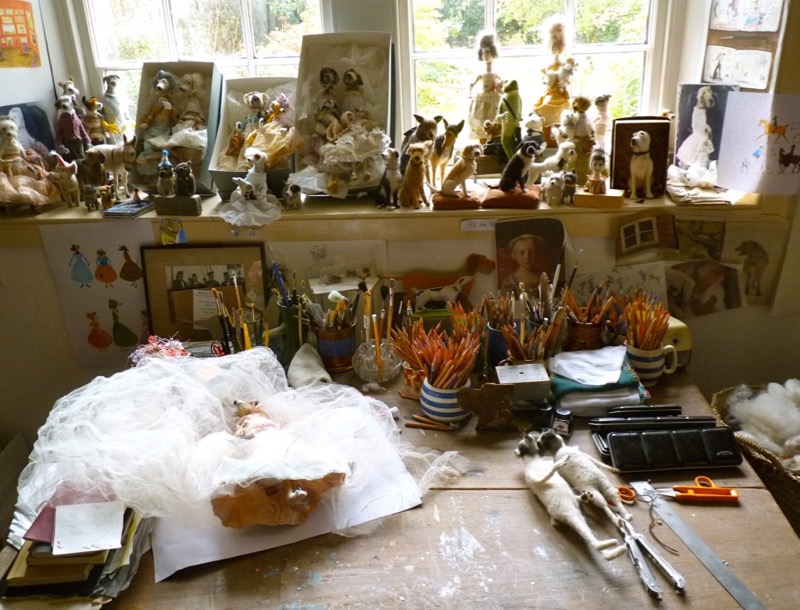
[Domenica’s work table]
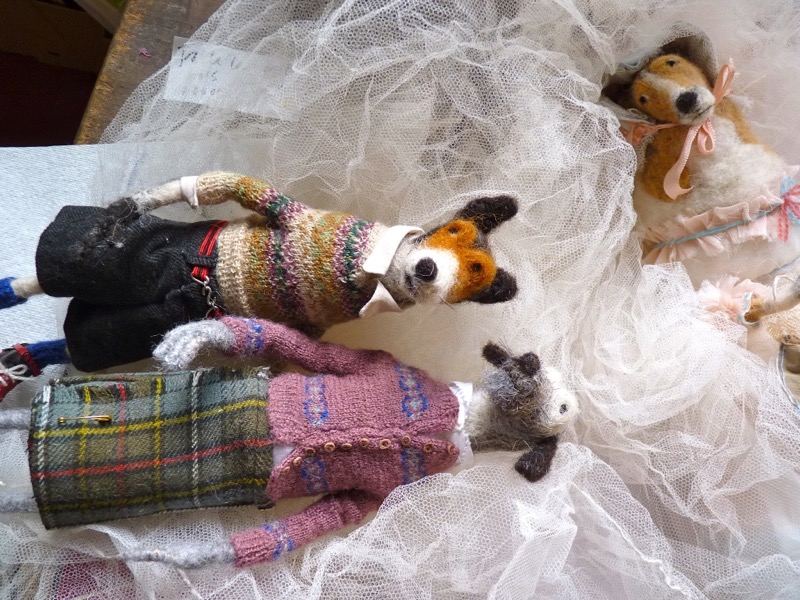
[Bride dog and friends, sculpted from felted wool, conceived, dressed and hand made by Domenica.]
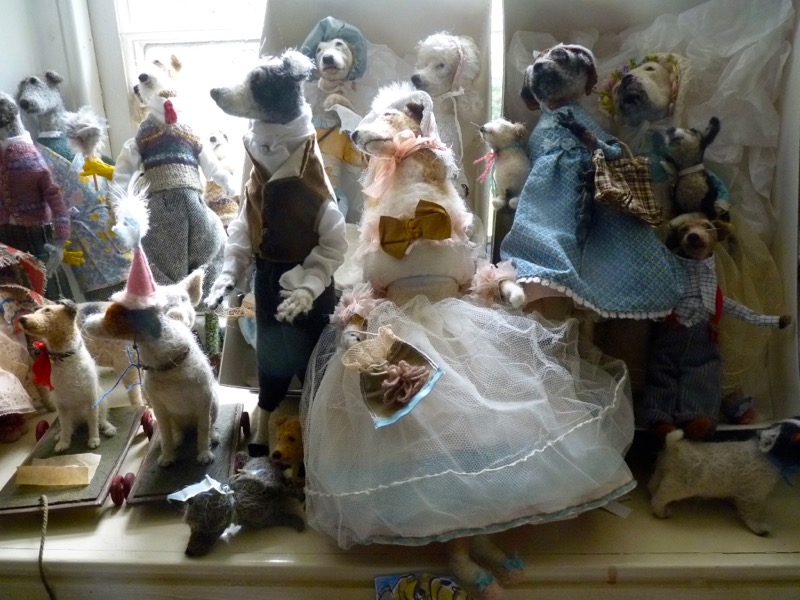
It has seen books being written, exhibitions being created , ideas and children being born. It has seen celebrations and deaths.
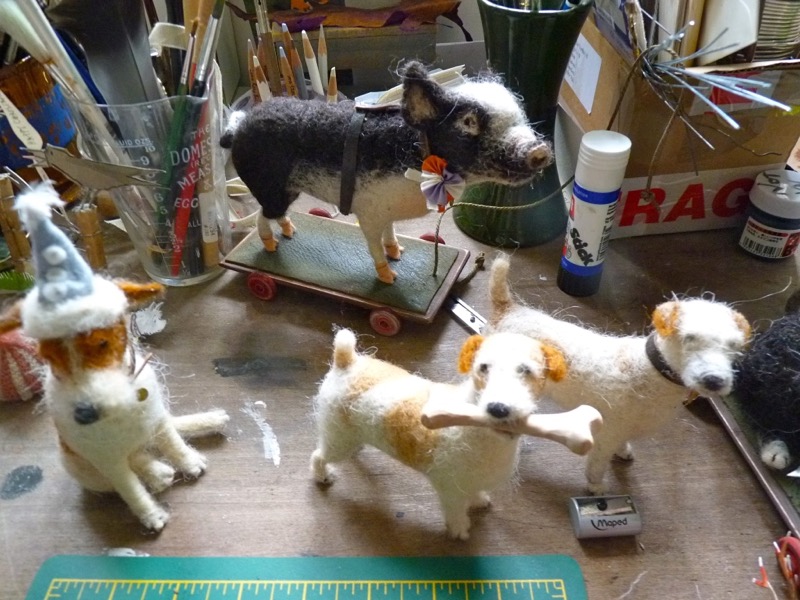
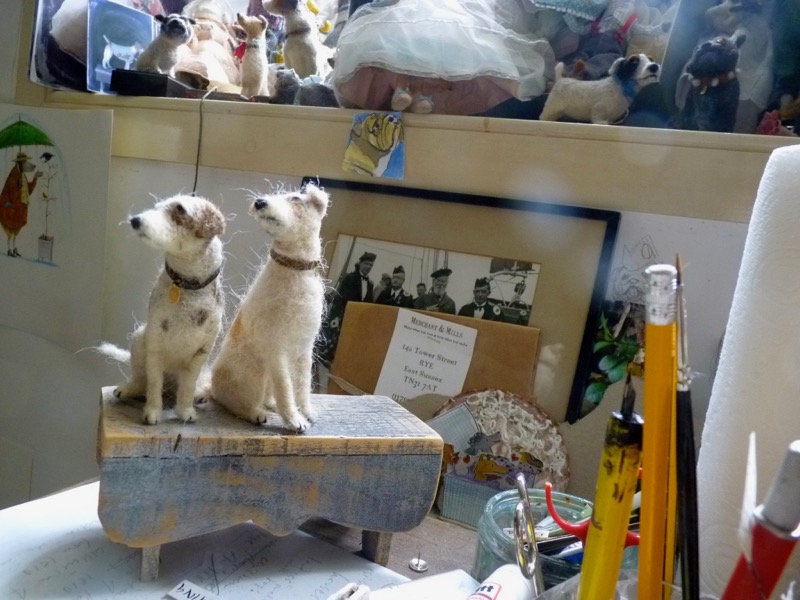
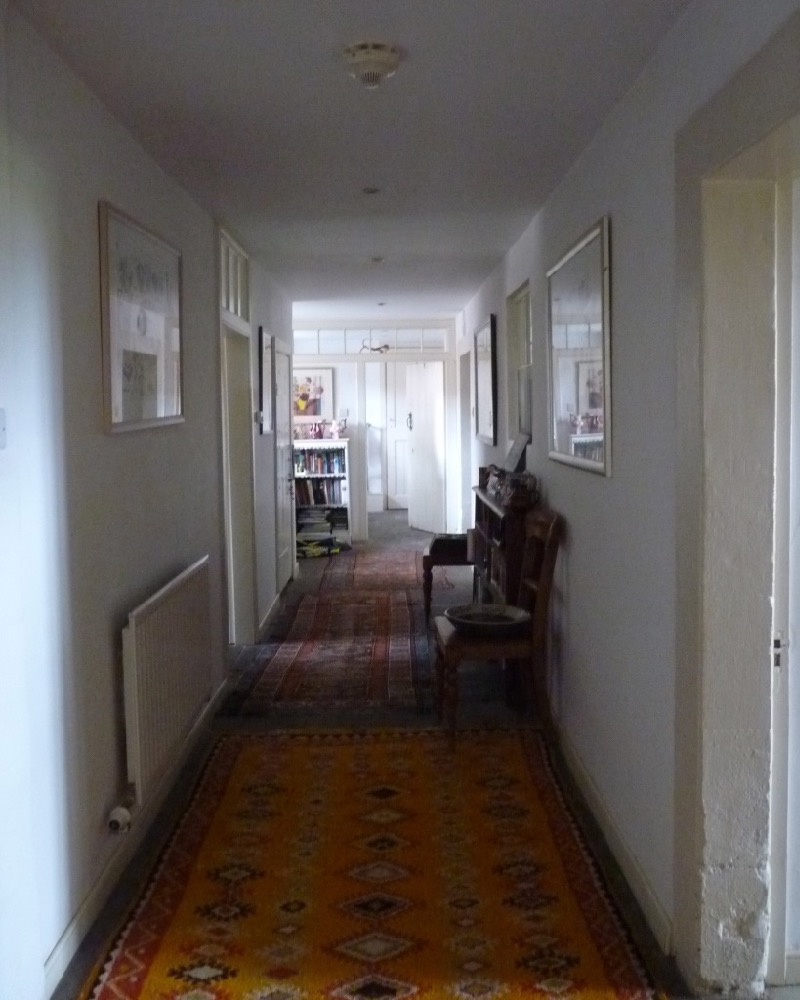
Coming back was something which happened quite by chance
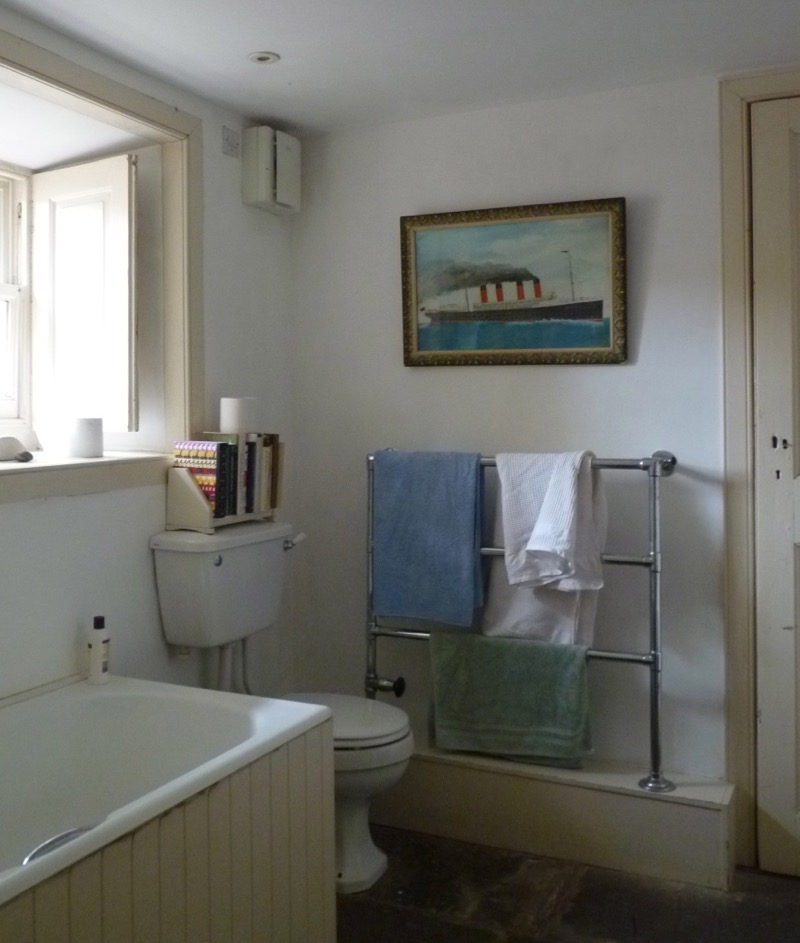
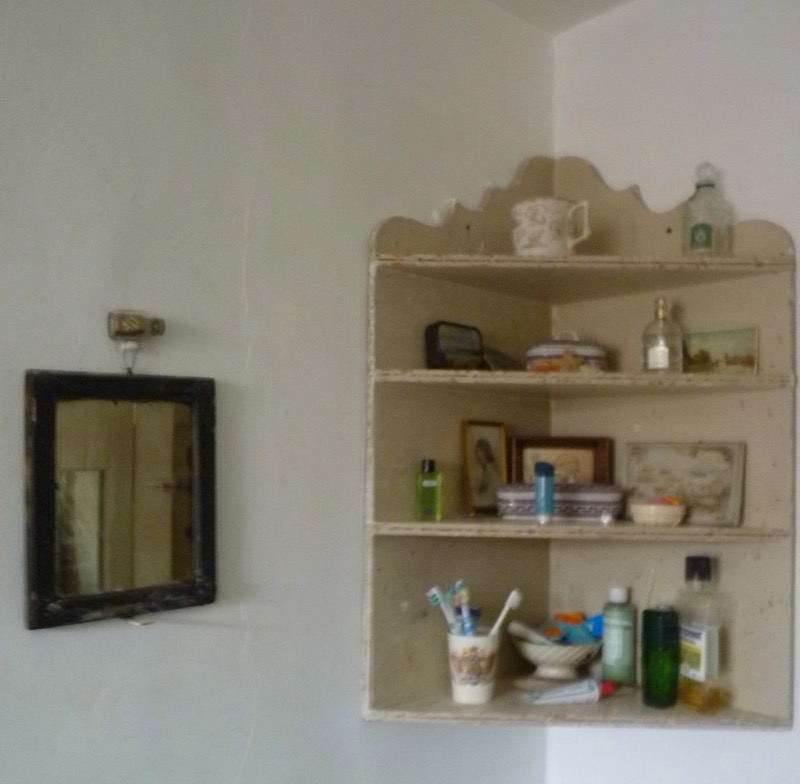
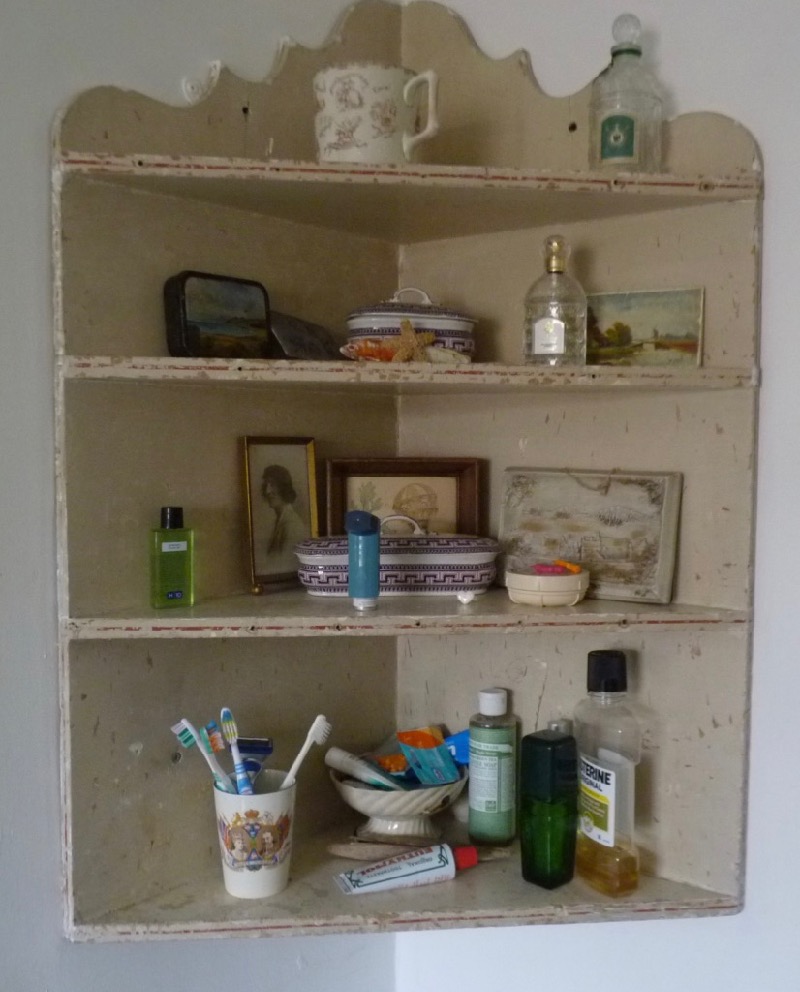
and only now, 21 years later, do I truly understand the enormous value of intergenerational living in such a privileged place and the wellspring of inspiration it gives me .
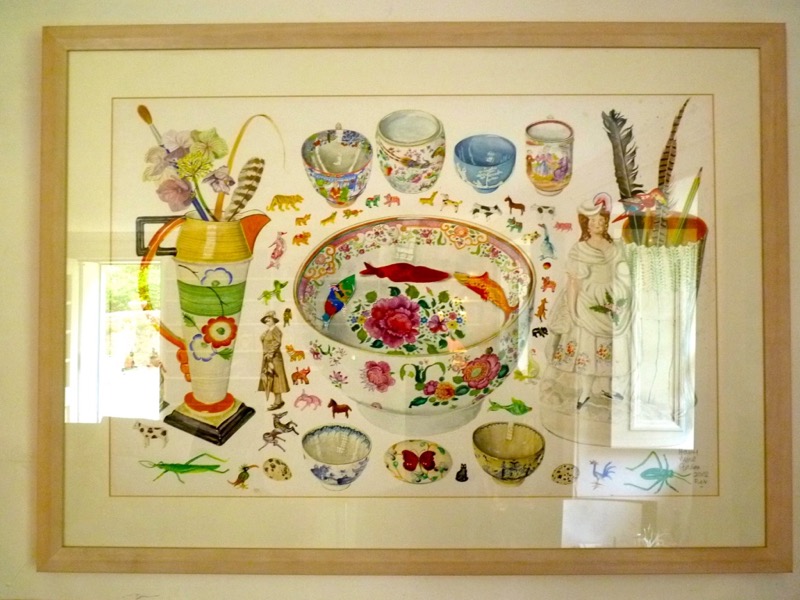
[Late still life by Harry More Gordon. Objets trouves, the ceramics, feathers and the things picked up around the house that habitually made up his compositions.]
you can buy your own felting kit and make a dog of your own. Domenicamoregordon.com
Charlie Fletcher’s privately published short story is Safe Home. written as a ‘venting exercise’ in response to the Iraq war and the Chilcot enquiry, and highly recommended.
